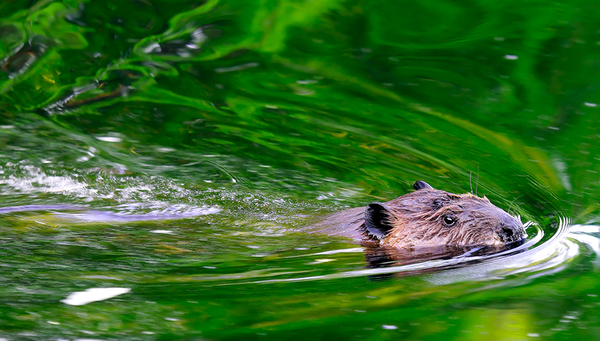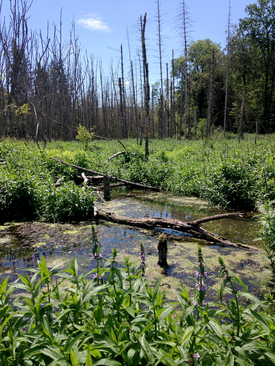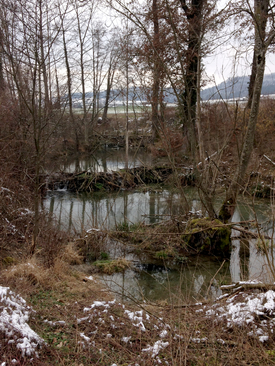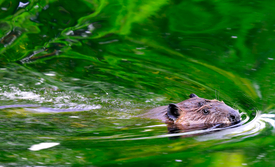News Detail
Streams in agricultural areas benefit from beavers
February 9, 2021 |
Eradicated at the start of the 19th century, beavers can now be found once again almost anywhere across the length and breadth of the country. Particularly on the Swiss Plateau and in the last ten years, they have become so widespread that five to six thousand individuals are currently estimated to live in Swiss bodies of water.
True master builders
The rodents are known for making significant changes not only to the morphology but also the hydrology and ecology of natural watercourses, making them more dynamic and biodiverse. Until now, however, it was unclear whether this was also true of urban and agricultural streams – in other words, precisely those streams that the beavers predominantly inhabit today. Researchers from Eawag and the University of Lausanne have now shown that this is indeed the case: beaver ponds not only increased the biodiversity of two streams in agricultural areas, but also altered the food supply available to aquatic animals. However, the extent of the beavers’ influence depended strongly on the topography.
At the Mederbach in the municipality of Marthalen, the beaver dams have created a swamp-like wetland area.
(Photo: Christopher Robinson)
Effect depends strongly on topography
For their study, the researchers examined two streams in the Zürcher Weinland region in which beavers first began to construct several dams more than ten years ago: the Mederbach in the municipality of Marthalen and the Langwisenbach in the municipality of Flaach. As the results show, the beavers have had a positive impact on the streams in many respects. For example, the resulting ponds retain sediments and nutrients that would be carried away immediately in an undammed stream. The ponds also mean that more terrestrial food sources are available to aquatic organisms. Last but not least, the ponds have created new habitats, allowing animals to establish themselves that are otherwise found in calm bodies of water rather than fast-flowing ones. This has increased the aquatic biodiversity of the overall system. Although all of these effects were observed in both streams, they were more pronounced in the Mederbach than in the Langwisenbach. This can be explained by differences in topology: as the Mederbach has a shallower gradient than the Langwisenbach and is not restricted at the sides by a ravine-like basin, it has a greater amount of space in which to change. Overall, the beaver ponds on the Mederbach were also much wider and less deep.
The extent to which beavers can alter their habitat depends on the topography of the stream. In the Langwisenbach, the width of the beaver ponds was restricted by the banks on both sides.
(Photo: Christopher Robinson)
Noticeable results in a short time
“Our results show that beavers can also enhance agricultural streams from an ecological perspective”, says Christopher Robinson, an aquatic ecologist and lead author of the study. Robinson adds that, as revitalisers, beavers represent a simple and sustainable solution that is already being pursued in Switzerland. Moreover, many of the positive effects are apparent within the first year, such as the colonisation of the new habitats. In the studied streams in Marthalen and Flaach, this even included endangered species such as dragonfly larvae. From the scientist’s point of view, the return of the beaver is therefore a win-win situation. “However, if the populations continue to expand so successfully, there will inevitably be some conflicts”, Robinson points out.
Cover picture: Mark Giuliucci, Flickr, CC BY-NC 2.0




